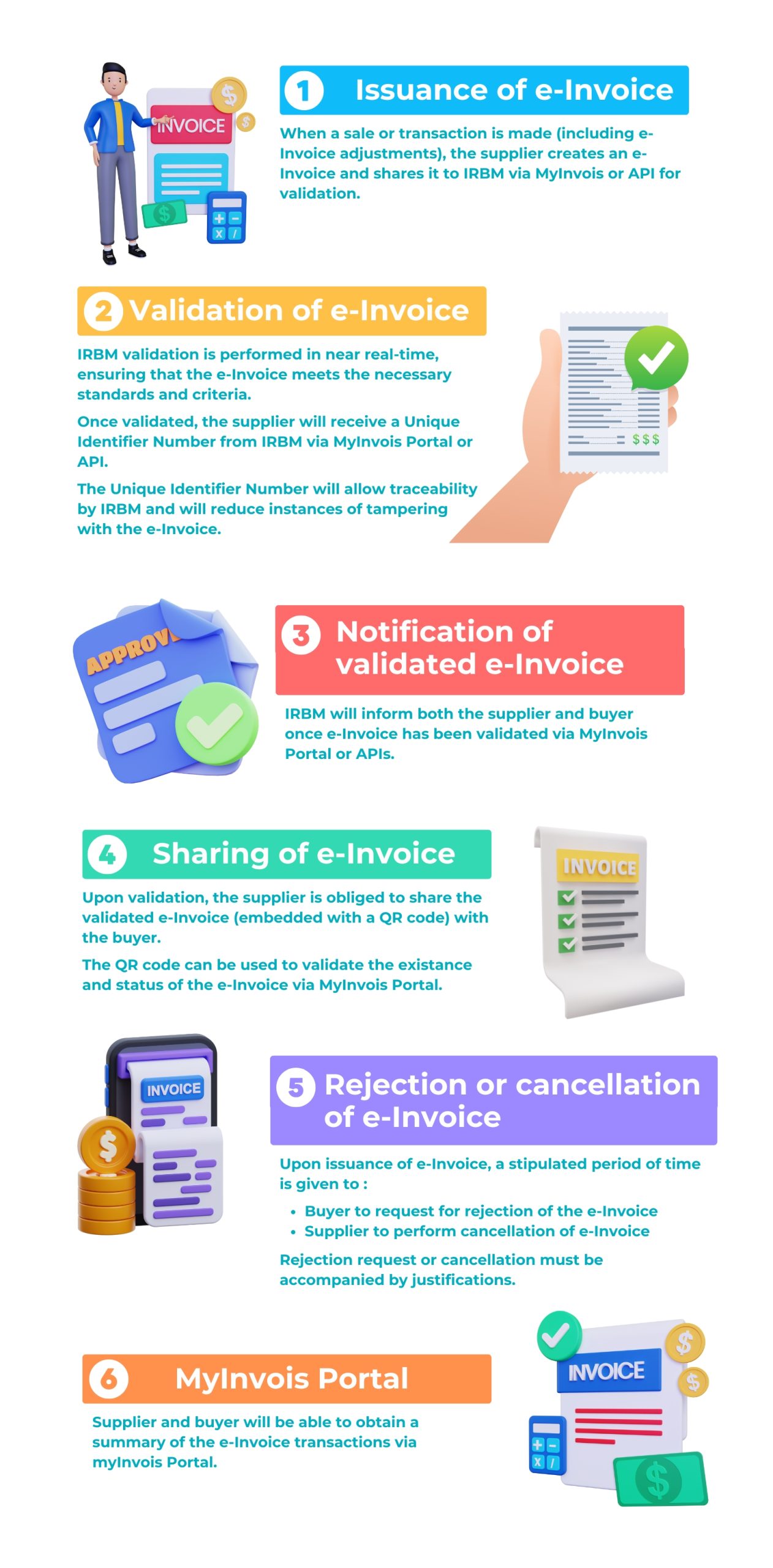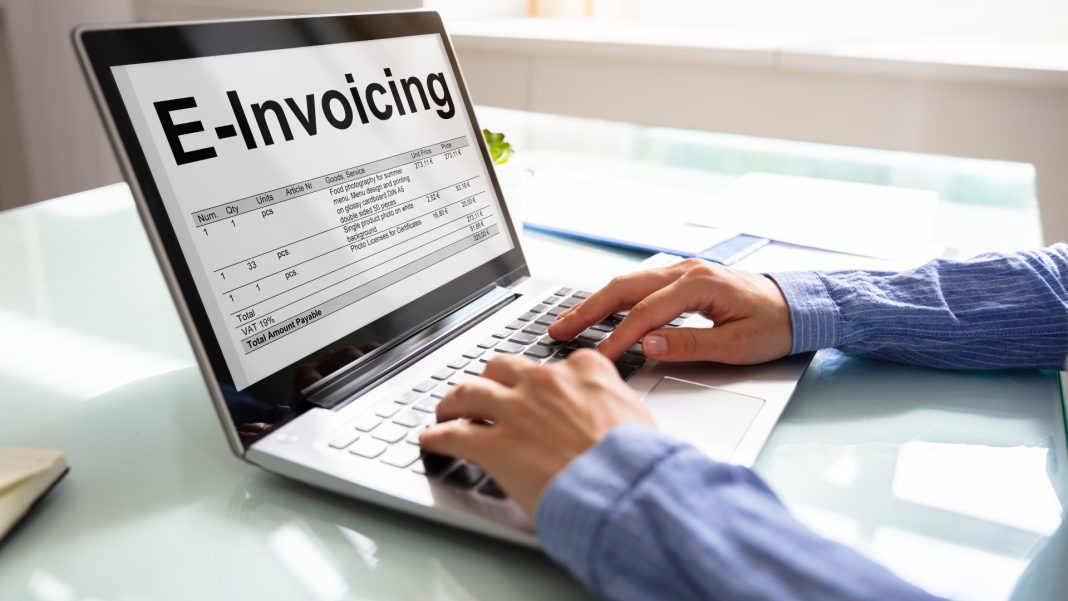The introduction of e-Invoice in Malaysia marks a significant shift in how businesses will handle their invoicing and tax reporting. This digital invoicing system, aligned with the Twelfth Malaysia Plan, is designed to enhance the efficiency of the country’s tax administration by enabling near real-time validation and storage of transactions. While this initiative offers many benefits, it also brings several concerns that business owners need to be aware of.
What is e-Invoice?
e-Invoice is an electronic invoicing system that allows businesses to submit and validate their invoices digitally. The system will cater to various types of transactions, including Business-to-Business (B2B), Business-to-Consumer (B2C), and Business-to-Government (B2G). The primary goal of e-Invoice is to streamline the invoicing process, reduce errors, and improve tax compliance by making transaction data accessible to the tax authorities in near real-time.
Why Should Business Owners Be Concerned?
- Compliance Requirements:
- With the e-Invoice system, businesses will be required to submit their invoices electronically through a government-approved platform. This means that all transactions must be recorded and reported digitally, which could require significant changes in how businesses manage their financial operations.
- System Integration:
- Businesses will need to integrate their existing accounting and invoicing systems with the e-Invoice platform. This could involve additional costs for software upgrades, training, and possibly hiring IT professionals to ensure seamless integration.
- Data Security and Privacy:
- As invoicing moves to a digital platform, the security of sensitive business data becomes a critical concern. Business owners must ensure that their systems are secure to prevent unauthorised access and data breaches. The government will also need to implement strong cybersecurity measures to protect the e-Invoice system.
- Increased Transparency and Monitoring:
- e-Invoice allows the government to monitor transactions more closely, which could lead to increased scrutiny of business operations. While this promotes transparency, it also means that businesses must be meticulous in their record-keeping and ensure that all transactions are accurately reported.
- Impact on Cash Flow Management:
- The real-time nature of e-Invoice means that businesses will need to manage their cash flow more efficiently. Delays in submitting invoices or errors in data entry could impact the timing of payments and potentially disrupt cash flow.
- Initial Transition Challenges:
- Adopting a new system can be challenging, especially for small and medium-sized enterprises (SMEs) that may have limited resources. The transition to e-Invoice might require significant effort in terms of learning, adjusting processes, and overcoming any technical hurdles.
- Penalties for Non-Compliance:
- As with any regulatory requirement, failure to comply with the e-Invoice system could result in penalties or fines. Business owners must stay informed about the implementation timeline and ensure they are ready to meet the new requirements.
For more information about e-invoicing, join our upcoming Transitioning to e-Invoicing: A Guide for Malaysian SMEs event. Click to find out more.
How Does E-Invoicing Work?
There are two main ways to issue e-invoices:
- MyInvois Portal: A free platform provided by the government for businesses of all sizes.
- API Integration: For larger businesses with complex systems, you can directly connect your software to the government’s system.
Refer to the e-Invoice flow below :

Key Points for Business Owners
- Mandatory Implementation: All businesses in Malaysia will eventually need to use e-invoices.
- Phased Rollout: The government is introducing e-invoicing gradually, based on your business’s annual revenue.
- Support Available: The government offers resources and assistance, including the MyInvois Portal and guidance on API integration.
- Data Security: The government prioritises data protection and has implemented security measures to safeguard your information.
Tips for a Smooth Transition
- Start Early: Don’t wait until the last minute to implement e-invoicing.
- Choose the Right Method: Decide if the MyInvois Portal or API integration is best for your business.
- Train Your Staff: Ensure your employees understand the new system and processes.
- Backup Your Data: Keep physical copies of your invoices as a backup.
- Seek Help: If you’re unsure about anything, reach out to the government for assistance.
Remember: While there might be some initial challenges, the benefits of e-invoicing outweigh the costs. By embracing this change, you’re not only complying with government regulations but also improving your business efficiency.
For more information about e-invoicing, join our upcoming Transitioning to e-Invoicing: A Guide for Malaysian SMEs event. Click to find out more.
Disclaimer: The information contained in this article is for general informational purposes only and should not be construed as professional advice. While all efforts have been made to ensure the accuracy of the information presented, it is recommended to consult with a qualified professional for specific guidance applicable to your business situation.
Information Source: This article references and draws heavily from the Inland Revenue Board of Malaysia’s (IRD) official e-invoice resources available at: https://www.hasil.gov.my/en/e-invoice/. We encourage you to visit this website for the latest updates, official guidelines, and comprehensive information on e-invoice implementation in Malaysia.


